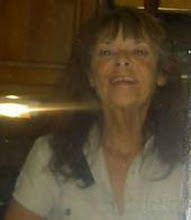Friday, February 29, 2008
Quanah's Parents : A True Native Indian Love Story
Quanah Parker was a warrior in his youth, a rancher in his maturity. The two photographs here show that he worked hard to accommodate both worlds. Some of his flexibility may have been due to his parents—and thereby hangs a love story.
His mother was Cynthia Ann Parker, the daughter of a prominent Texas family. In 1836 she was captured by Comanche during a raid and adopted with the name of Nadua. After a time she married Peta Nacona, and they had three children: Quanah, Pecos, and a daughter Topsana.
In 1860 the Texas Rangers raided their viliage and killed almost everyone. Nadua was recognized as “white,” however, and she was returned to the Parker family with her two young children. Peta Nacona and the young Quanah returned home from hunting to find most of their people killed. None of the survivors knew what had happened to Nadua and the two children.
Nadua refused to settle back into life as “Cynthia Ann.” She begged ceaselessly to be returned to her husband and the Comanche people. When her little Topsana died Nadua despaired. She starved herself to death and was buried beside her daughter in the cemetery at Fort Sill Texas.
Her husband did not fare better. Not long after the Rangers’ raid Peta Nacona was wounded in a battle with Texans. Shortly after that he was wounded again, this time fatally. Before he died he called Quanah to him and told his son what he learned about the fate of his wife and the two young children. The Comanche do not go much in for love stories, but it is obvious that the loss of Nadua had been a great loss to Peta Nacona.
That is the story. Unlikemany mixed marriages it was happy, and its ending very sad. In later years Quanah, too intelligent to harbor bitterness, turned up at the Parker ranch and became acquainted with his white relatives. It was there that he learned ranching.
Though he was buried at Fort Sill beside his mother and sister, throughout his life he remained thoroughly traditional. He lived to be the senior chief of the Comanche and one of the founders of the Native American Church.
Subscribe to:
Post Comments (Atom)

No comments:
Post a Comment